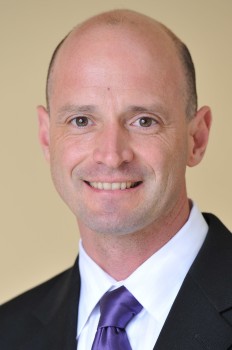Harvard Law School Professor Charles J. Ogletree launched the new UCLA Luskin Lecture Series with a stirring address that wove personal, political, and historical themes of the African American civil rights movement before an audience of more than 250 people at the California African American Museum on February 16.
Ogletree’s wide-ranging talk touched on the 1954 Brown v. Board of Education Supreme Court decision that nullified separate but equal, the lives of Martin Luther King and Supreme Court Justice Thurgood Marshall, the law school academic performances of his former students Barack and Michelle Obama, and the arrest of fellow Harvard Professor Henry Louis Gates in 2009. The Gates incident is the topic of Ogletree’s most recent book, Presumption of Guilt, which uses the case to analyze race, class, and crime in the U.S.
Ogletree set the tone for his remarks with a recognition in the audience of Luskin School Visiting Professor Michael Dukakis, whose 1988 presidential campaign was torpedoed by the infamous Willie Horton commercial that created a genre of political advertizing exploiting “race as the dividing line,” Ogletree said.
“Martin Luther King had a dream,” Ogletree said. “Now we must have a plan.” He pointed out that the achievement of the nine students who integrated Central High School in Little Rock Arkansas was not their enrollment in the school, but their graduation and matriculation to college. (One of the nine, Terrence James Roberts, in 1970 earned his Master’s in Social Work (MSW) from UCLA, a program now housed in the Luskin School, and went on to earn a PhD.)
Citing a wide range of issues and incidents, Ogletree, who also directs Harvard’s Charles Hamilton Houston Institute for Race and Justice, emphasized that “social justice is not a regional problem, it is a national problem.”
“The divide between wealthier African Americans and poorer African Americans is greater than ever before,” he said, calling on the audience to see the link between link the 1964 Civil Rights march on Washington and the Occupy Wall Street movement that sprang up last year.
“If we can do the social justice thing, we can have a great United States,” he added.
Among the lighter moments in the talk, Ogletree confided insights on the Obamas from their law school days offering a dead-on imitation of Barack Obama taking over the facilitation of class discussions. He spoke of his admiration of Michelle Obama for her commitment to volunteer work in a legal aid office when she was a student.
He also offered a fresh telling of the Gates incident, amusing the audience with the insight that in the heat of the moment, Gates, an esteemed university professor in his own kitchen, “forgot he was a Black man” as he challenged the white officer by shouting, “Do you know who I am?”
“Race trumps class” is the lesson of the incident, Olgetree said.
Toward the end of his remarks, Ogletree paid a moving dual homage to his late father and to Thurgood Marshall with a story linking the importance of his father’s last-minute needing a hat to wear at his son’s swearing in at the Supreme Court. Not so coincidentally, Ogletree later realized he always felt a need to wear a hat at protests and rallies.
He called on the audience to take on social justice concerns “as our moral mission.”
“We must dissent from the poverty of vision and the absence of moral leadership,” he said.
Recalling his observation of Thurgood Marshall’s wistfulness at the end of his career, he stressed the importance of carrying on from previous generations. “The next time you go through the door, leave it open for somebody else to follow,” he said.
The Luskin lecture Series was established as part of the recent $50 million gift from Los Angeles entrepreneur Meyer Luskin and his wife Renee to establish the Luskin School of Public Affairs at UCLA, housing the Departments of Public Policy, Social Welfare, and Urban Planning. The mission of the lecture is “to feature renowned thought leaders who are involved with issues changing the way our country addresses its most pressing problems.”
Dean Franklin Gilliam Jr. introduced the lecture noting the Luskins’ challenge to the School to pursue social justice as part of the school’s mission and the appropriateness of Professor Ogletree as the inaugural choice, citing his career as an “insightful, careful, and critical
thinker about life and the law.”
Pollster and policy analyst Shakari Byerly (MPP ’05) said what resonated for her in the talk were the “the enduring themes of the struggle for social justice.”
“Professor Ogletree’s stories reminded me of my own family’s journey,” she said.
The event was co-sponsored by the UCLA School of Law’s David J. Epstein Program in Public Interest Law and Policy.



